PSHE
Introduction
It is influenced by documents and research, including the DFE revised statutory requirements for Relationships Education and Health Education (https://www.gov.uk/government/publications/changes-to-personal-social-health-and-economic-pshe-and-relationships-and-sex-education-rse) and the PSHE Association’s programme of study.
Our PSHE education addresses both pupils’ current experiences and preparation for their future. Our intent therefore provides a spiral curriculum to develop knowledge, skills and attributes, where prior learning is revisited, reinforced and extended year on year. This is grounded in the established evidence base for effective practice in PSHE education. More on this and other relevant research can be found in the evidence and research section of the PSHE Association website.
We implement our intent using Jigsaw. Jigsaw 3-11 offers a comprehensive Programme for Primary PSHE including statutory Relationships and Health Education, in a spiral, progressive and fully planned scheme of work, giving children relevant learning experiences to help them navigate their world and to develop positive relationships with themselves and others.
With strong emphasis on emotional literacy, building resilience and nurturing mental and physical health, Jigsaw 3-11 properly equips schools to deliver engaging and relevant PSHE within a whole-school approach. Jigsaw lessons also include mindfulness allowing children to advance their emotional awareness, concentration and focus.
We organise intended learning into modules or units. These group the knowledge, skills and understanding that we want children to remember, do and use. Each module aims to activate and build upon prior learning, including from the early years, to ensure better cognition and retention. The skills required for working in a particular subject are outlined e.g. working scientifically. Close attention is paid to the tier 2 and tier 3 vocabulary to be taught to allow pupils to engage in the required vocabulary. They are deliberately spaced within and across years to introduce and revisit key concepts. This enables staff to deepen pupil understanding and embed earning. Each module is carefully sequenced to enable pupils to purposefully layer learning from previous sessions to facilitate the acquisition and retention of key knowledge. The Jigsaw Structure - how the big picture fits together: Jigsaw consists of six half-term units of work (Puzzles), each containing six lessons (Pieces) covering each academic year. Every Piece has two Learning Intentions, one specific to PSHE (including Relationships and Health Education) and the other designed to develop emotional literacy and social skills. Puzzles are launched with a whole-school assembly containing an original song, with each year group studying the same unit at the same time (at their own level), building sequentially through the school year, facilitating whole-school learning themes. The various teaching and learning activities are engaging and mindful of different learning styles and the need for differentiation and the Early Years (EYFS) planning is aligned to the National Early Years Framework (England).
Jigsaw’s Units of Work (Puzzles) are:
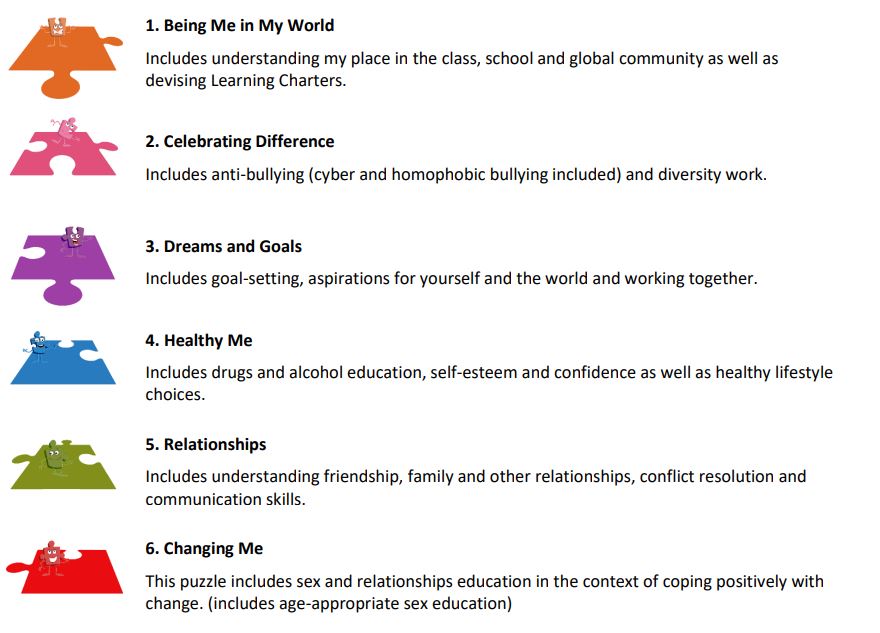
Using these child-centred headings for the sections of each Piece is not insignificant. It encourages teachers to see their pupils as whole children who want and deserve to learn, an attitude sometimes hard to hold onto amidst the ever-increasing pressures and demands of education and the curriculum.
• Closure - Each Piece, particularly when run as a circle approach, needs safe closure. This will always include the teacher praising the children for their effort, positive attitude and achievement, as well as giving one or two sentences to summarise the key learning points for the children.
PSHE lessons provide an inclusive environment where all learners can access the PSHE curriculum. Individual needs are catered for by class teachers and learning support assistants who work with SEND pupils on a daily basis and can identify individual adaptations to the lessons where needed.
Careers and meaningful opportunities
At Sandringham Primary we provide career links and meaningful opportunities throughout each subject within the curriculum. Our learners benefit from: class discussions, visits from different professionals, visits, webinars and utilising our local expertise.
We include the statutory relations and health education within our whole school PSHE program which is taught following the Jigsaw scheme of learning. See RSE policy for further information.
• Pupil Book Studies help to evaluate curriculum structures, teaching methods, pupil participation and response through a dialogic model.
• Does learning ‘travel’ with pupils and can they deliberately reuse it in more sophisticated contexts?
Teachers employ a range of strategies both at and after the point of teaching to check the impact of their teaching on the permanence of pupils’ learning. These include: retrieval practice, vocabulary use and application, deliberate practice and rephrasing of taught content, cumulative quizzing within the learning sequence, summarising and explaining the learning question from the sequence, tests and quizzes. Teachers use information from tasks, pupil book studies and other monitoring to support learning by responding to the gap between where pupils are and where they need to be. In lessons, they adapt explanations and examples to address misconceptions and provide additional practice or challenge where required. After lesson, they analyse pupils’ responses to identify shared and individual gaps in learning and misconceptions. Teachers then adjust subsequent planned teaching in response. In Jigsaw, each puzzle includes an opportunity for teacher assessment, but also offers children the chance to assess their own learning and have a conversation with the teacher about their two opinions. The task can usually be used as evidence in their year group floor book. Each Puzzle has a set of three attainment descriptors for each year group: Working towards (WT), Working at (AT) and Working beyond (GD).
We use summative assessment is ‘to provide an accurate shared meaning without becoming the model for every classroom activity’ (Christodolou, 2017). If our curriculum is effective, it will lead to improvements in summative assessments over time. Teacher assessment judgements are against an agreed assessment model (the curriculum). We make summative judgements annually. Teachers record summative judgements on OTrack.
Pupil book study is used as a method to quality assure our curriculum by talking to the children and looking in pupils’ books. We do this after content has been taught to see the extent to which pupils are knowing more, remembering more and able to do more. In preparation, we review the planned content, knowledge and vocabulary, so that conversations with pupils are meaningful and focused on what has been taught. When looking at books, we look at the content and knowledge, teaching sequence and vocabulary. We also consider pupils’ participation and consider the explanations and models used, the tasks the pupils are asked to do, the ability to answer carefully selected questions and retrieve information and the impact of written feedback. We ask careful questions that probe their knowledge, understanding and skills.
The Subject Leader undertakes a range of activities to understand what the curriculum looks like across the school and how well pupils know more, remember more and can do more as a result. In addition to the above tools, they use learning walks, planning reviews and book looks. They use their findings to support teachers to improve how they implement subjects and to make recommendations about the suitability of the intent for their subject. The Subject Leader formally reports on impact of the curriculum termly to the Curriculum Leader, Principal and Governors.
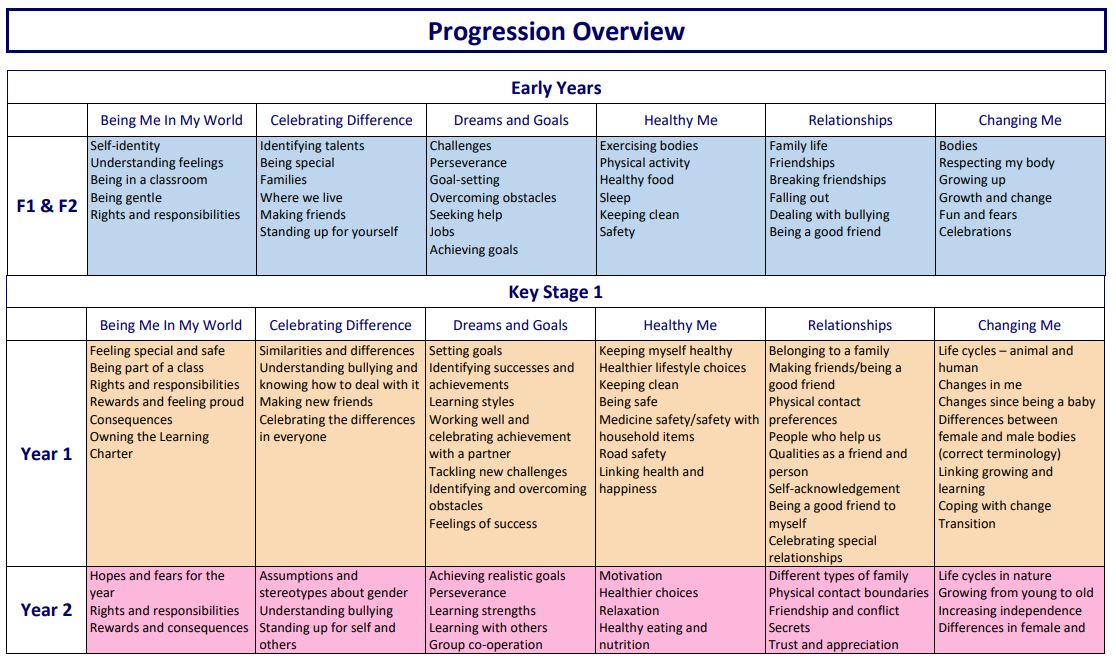
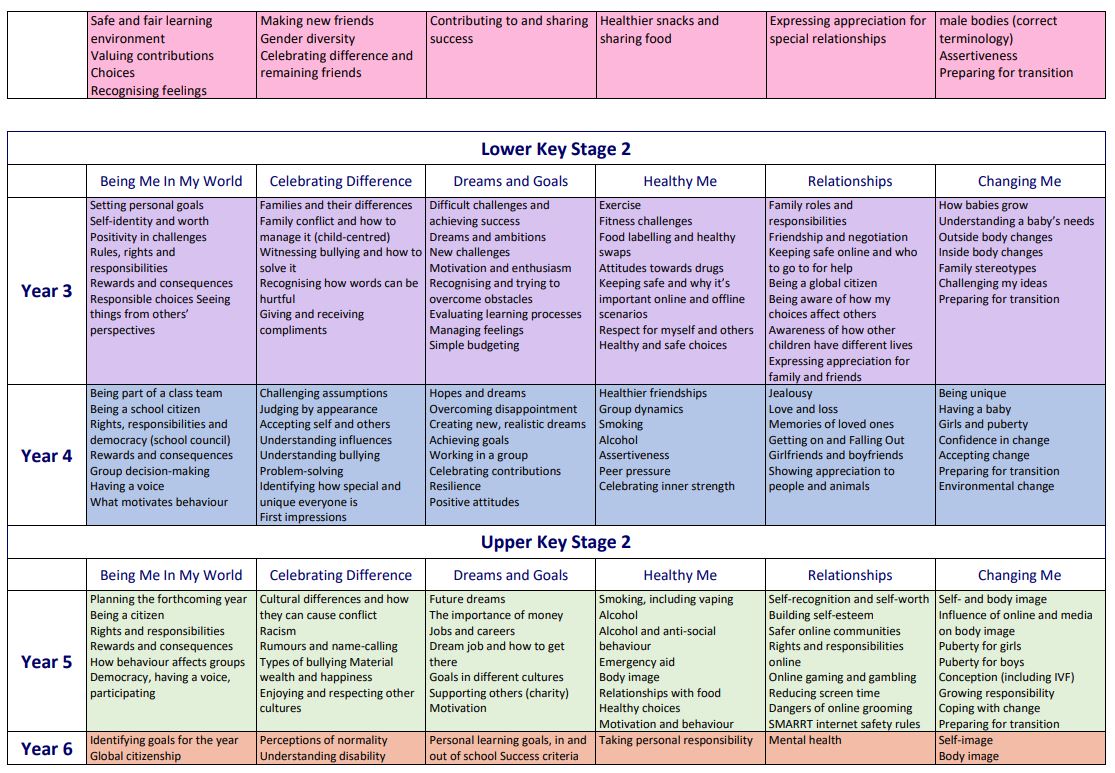

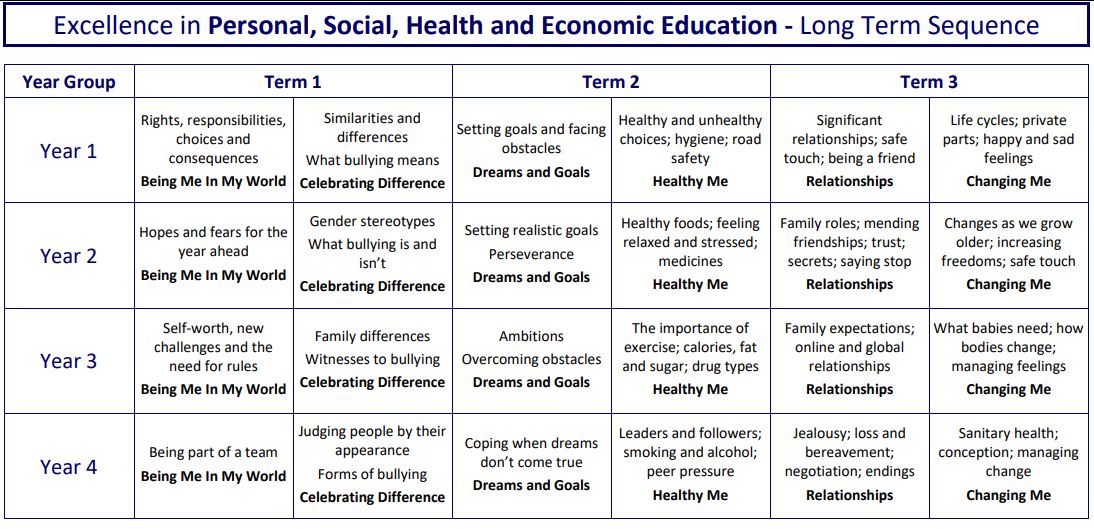

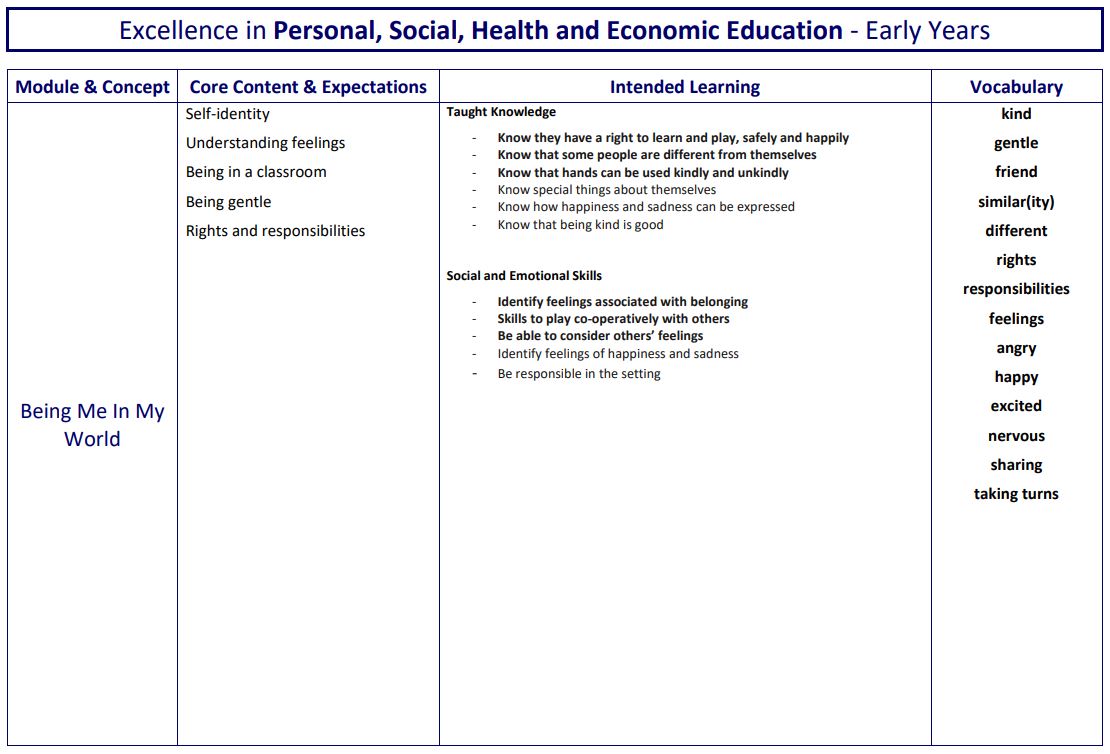


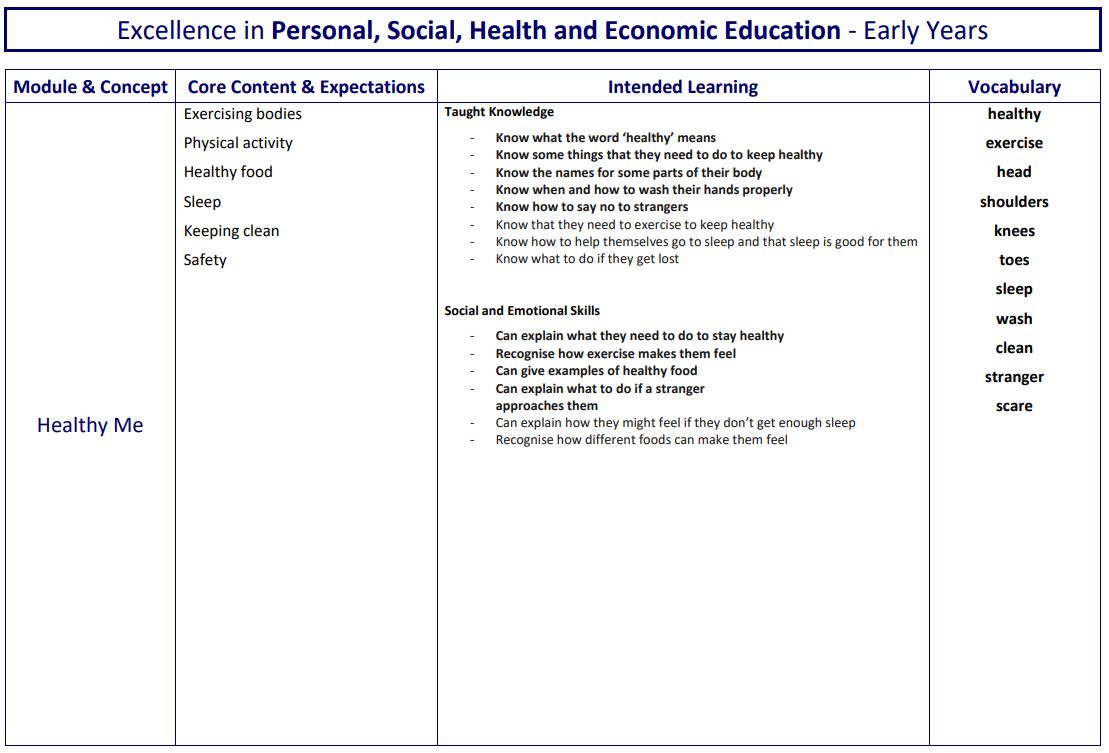

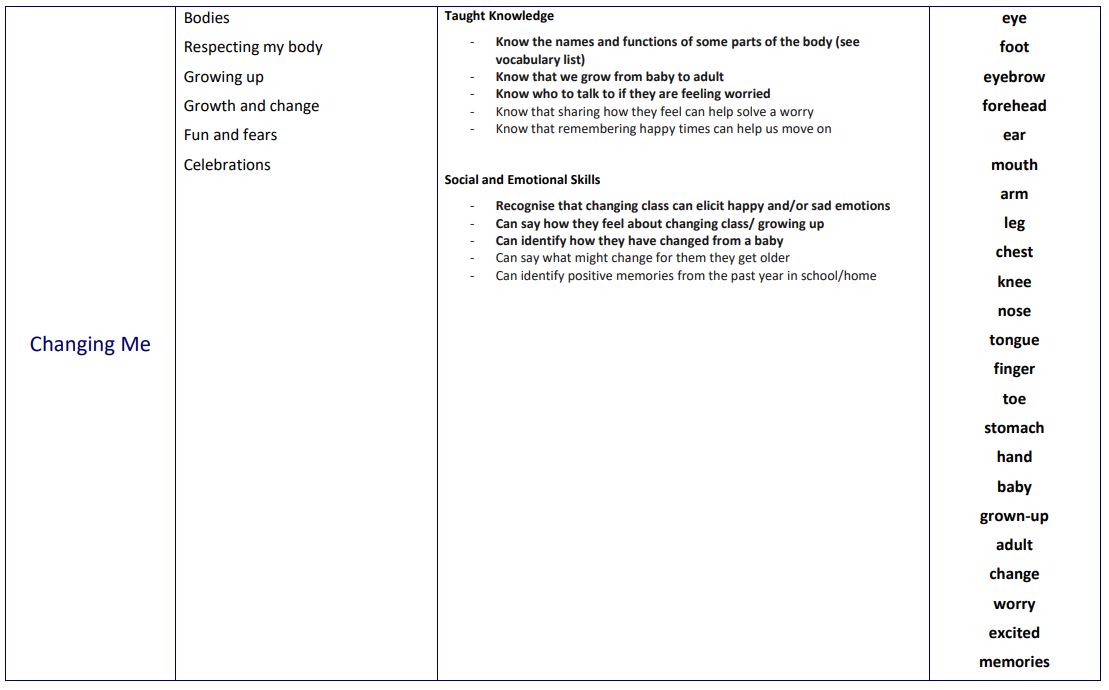
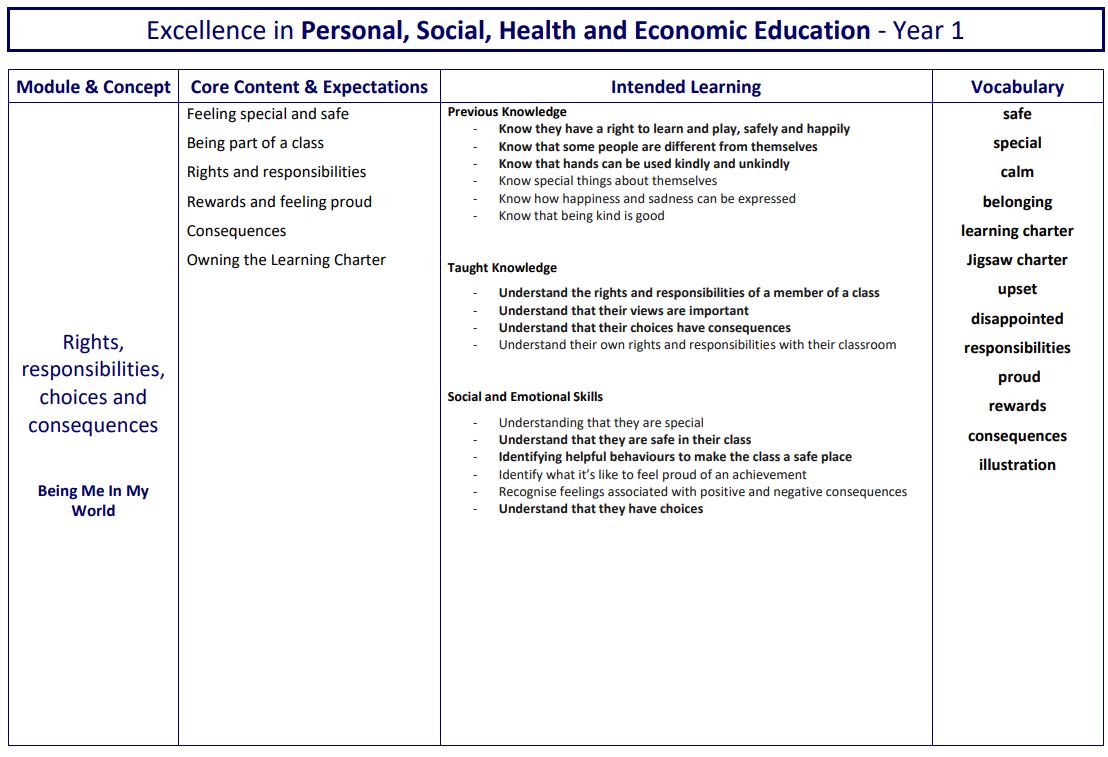
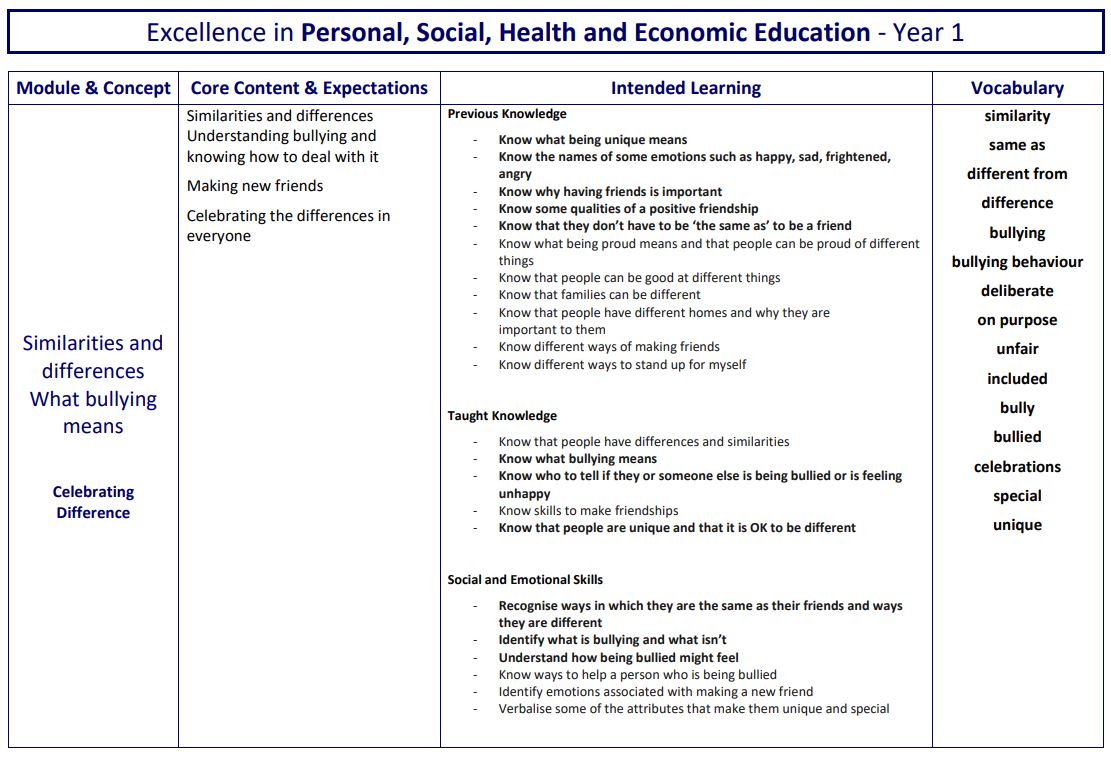
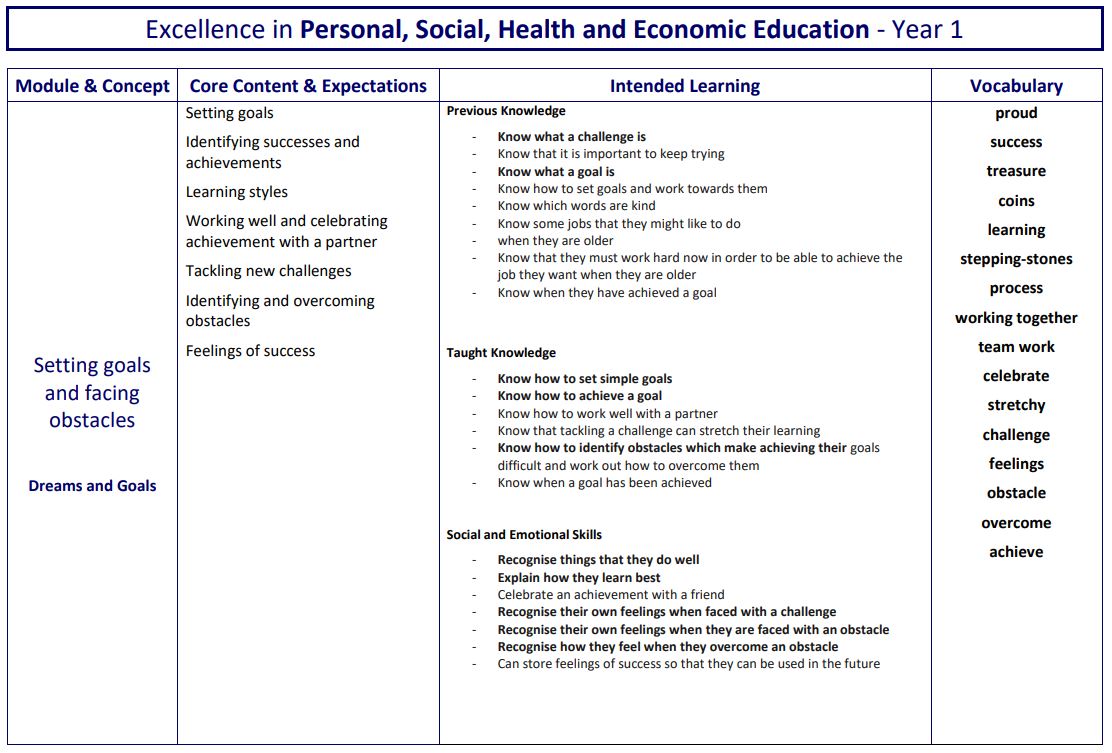
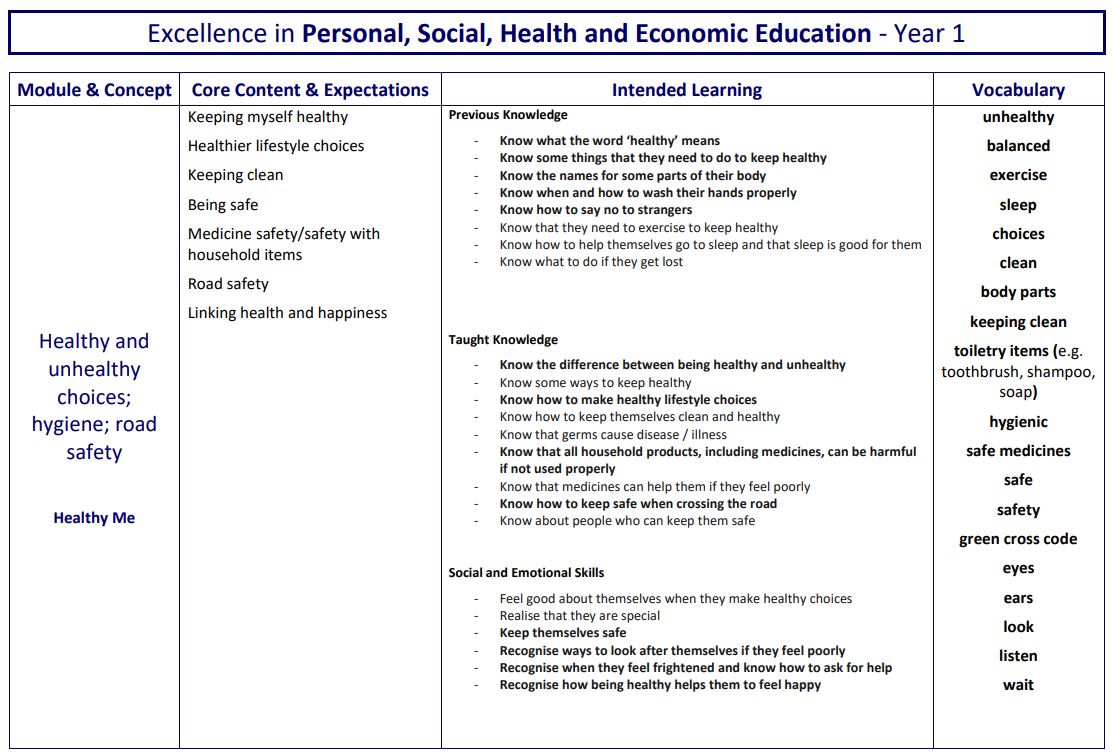
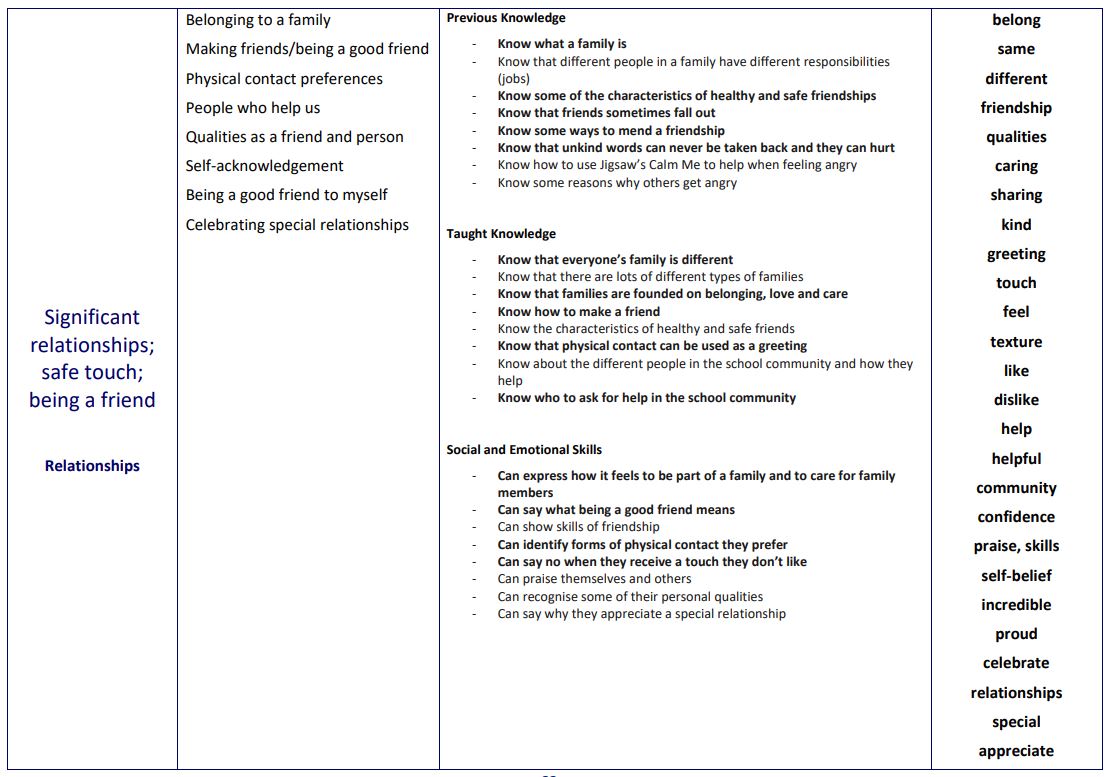
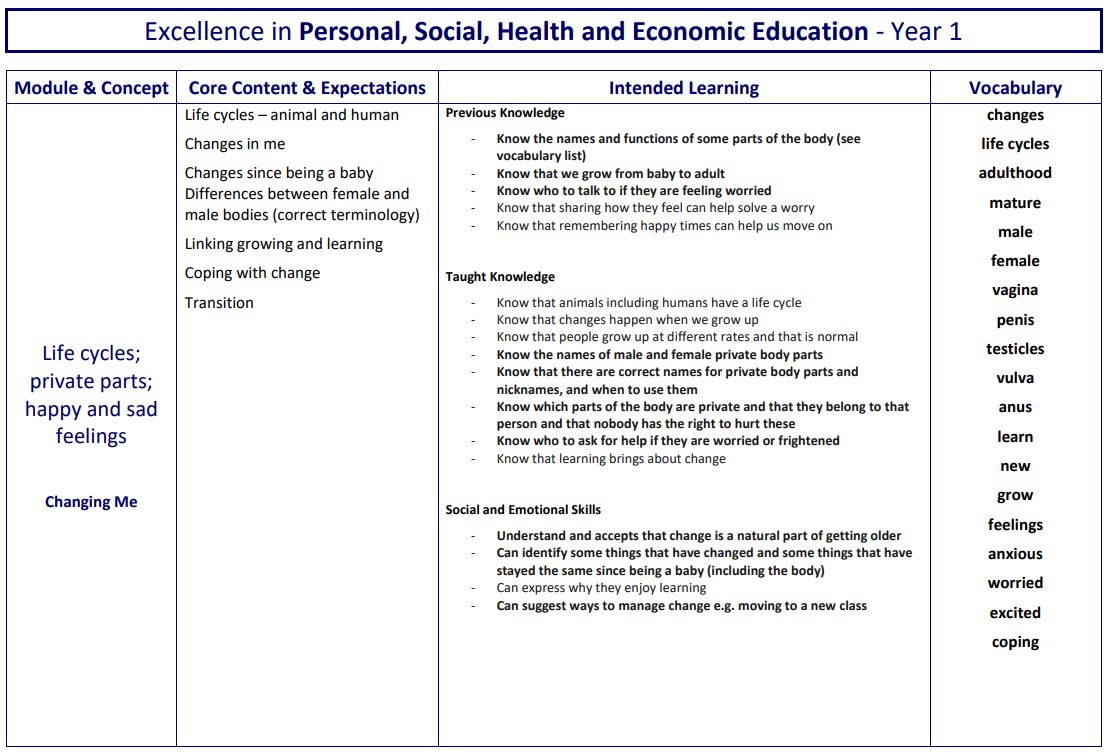
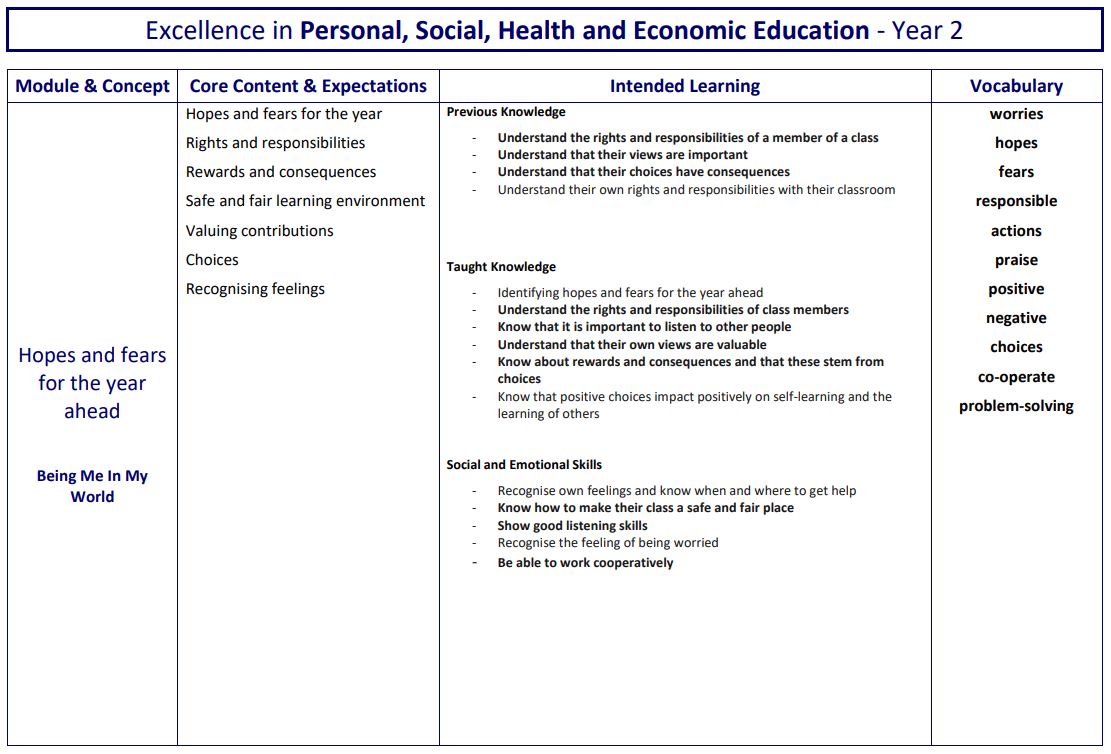
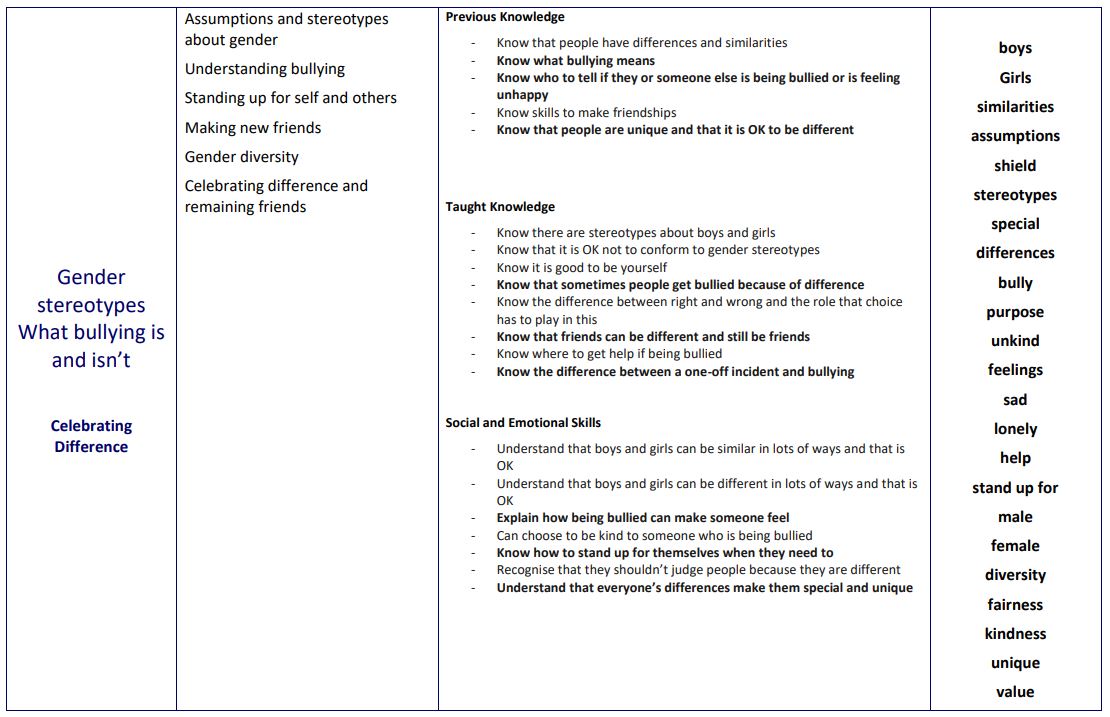
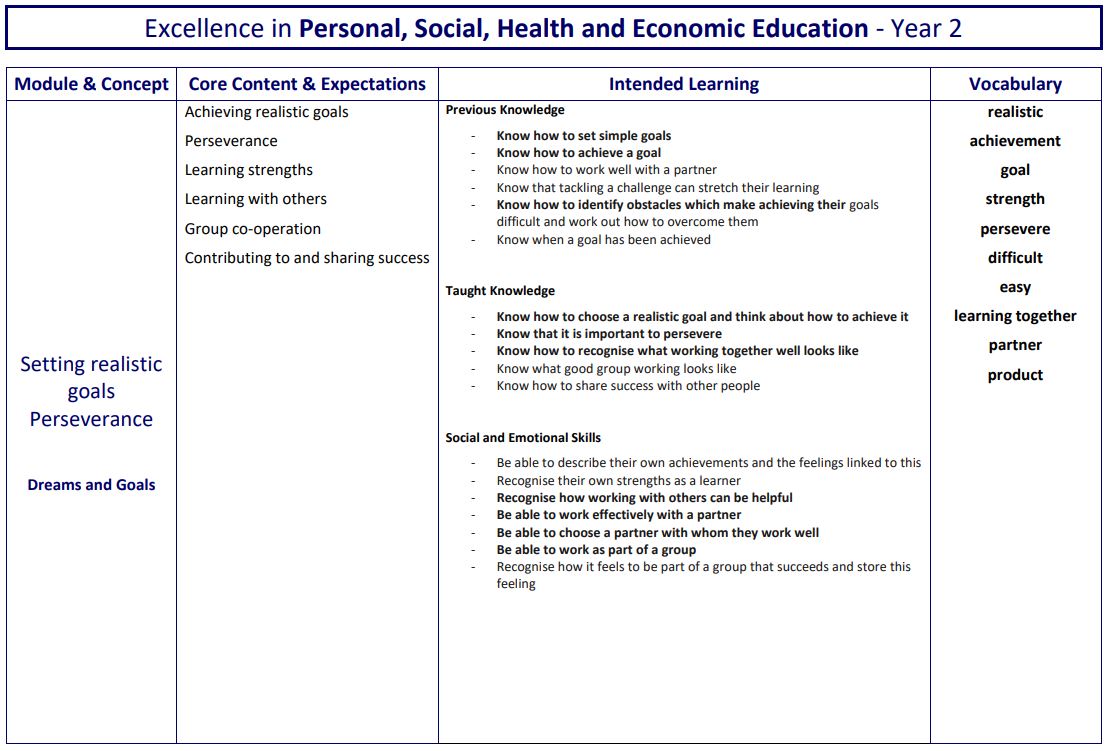
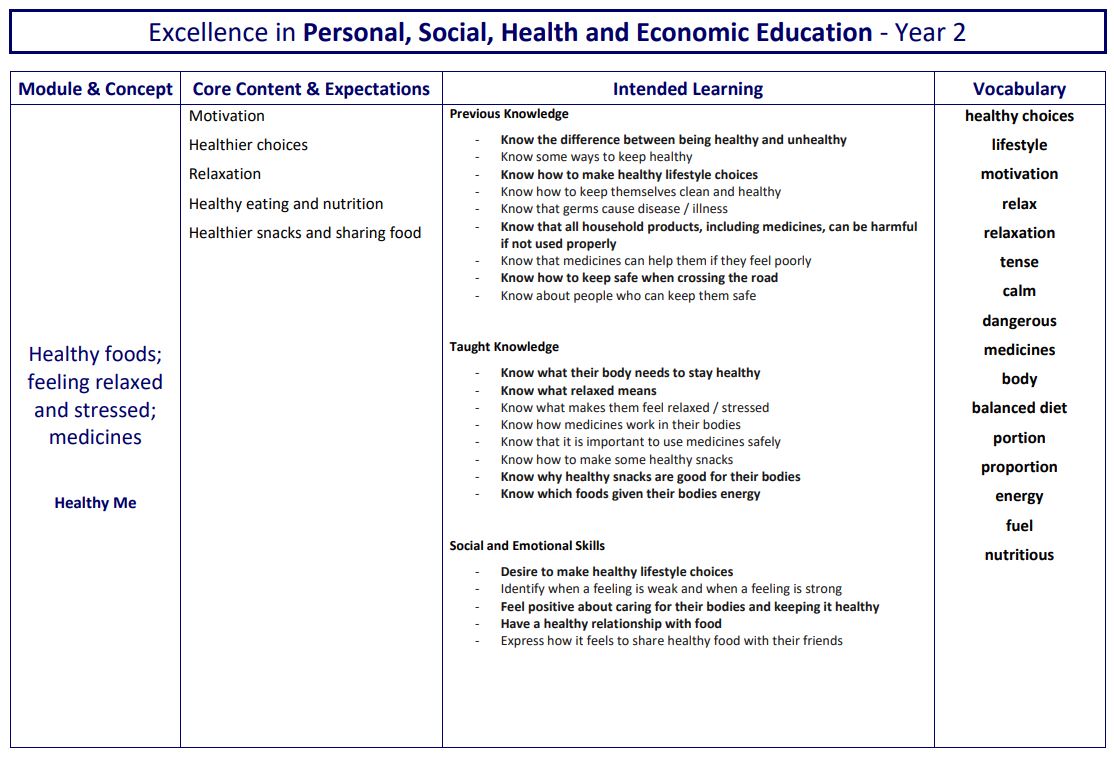


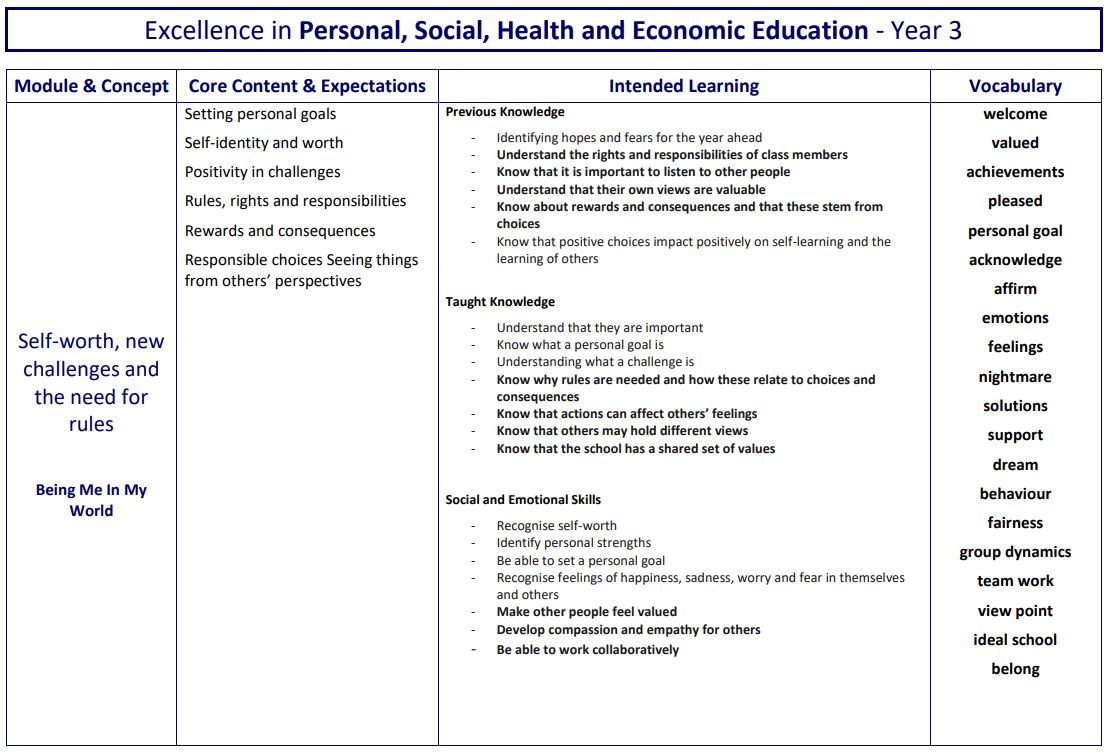
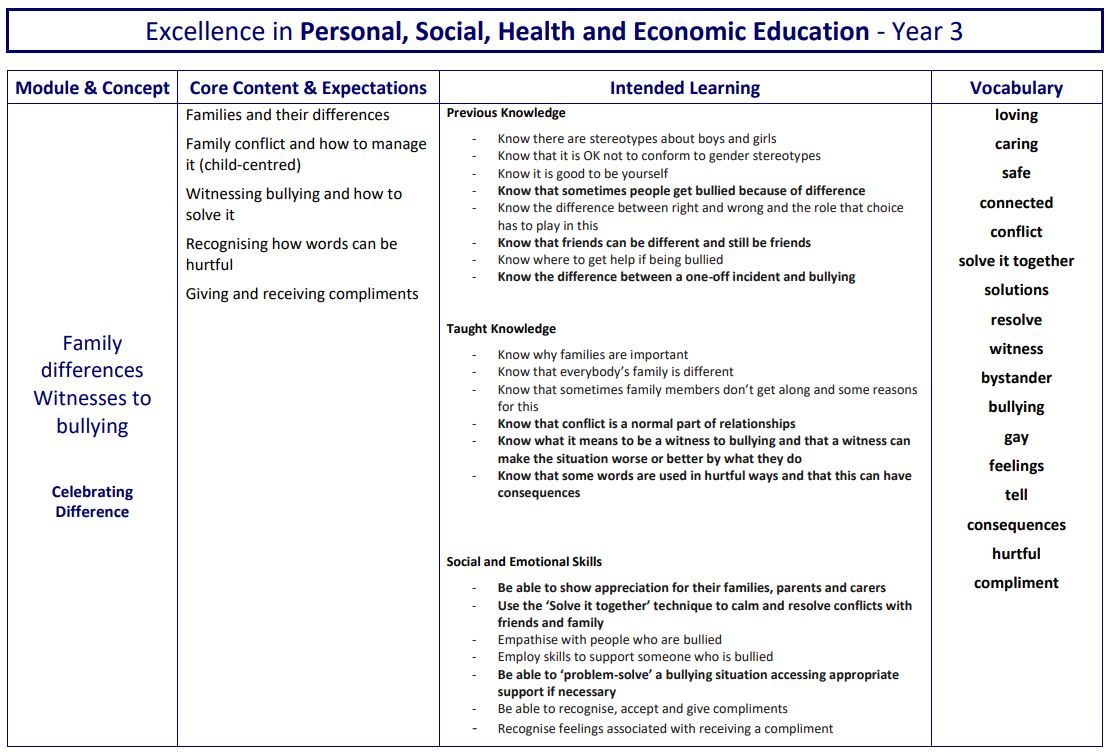
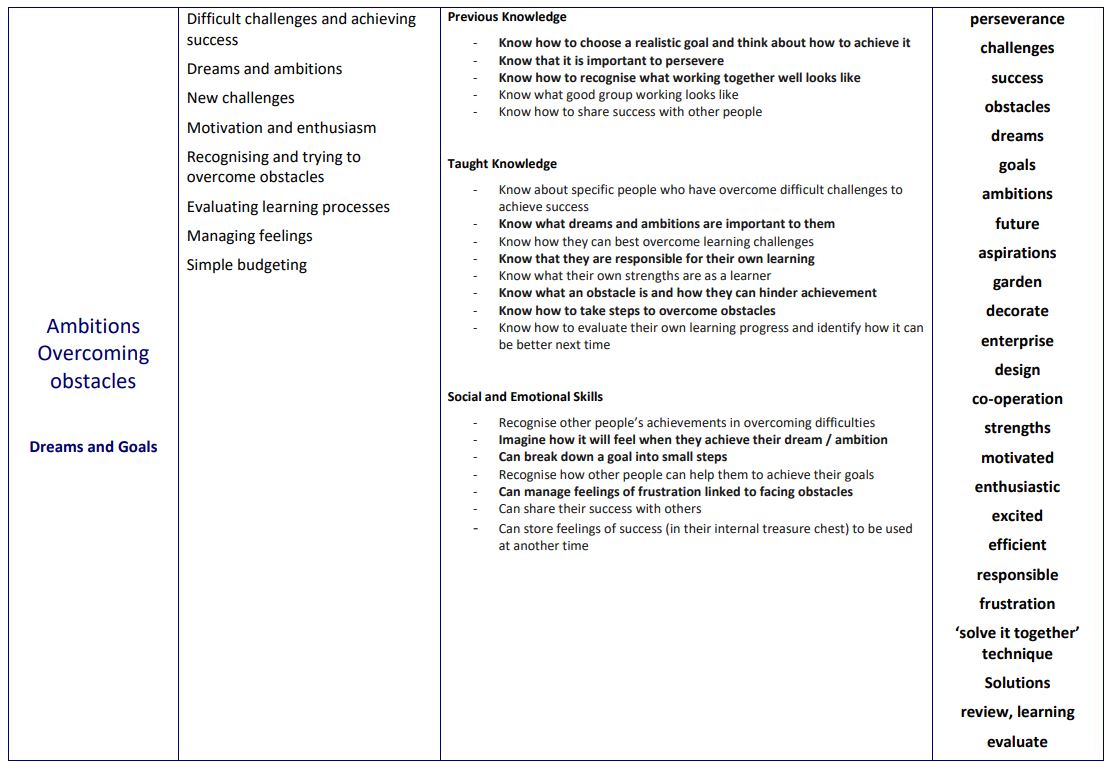
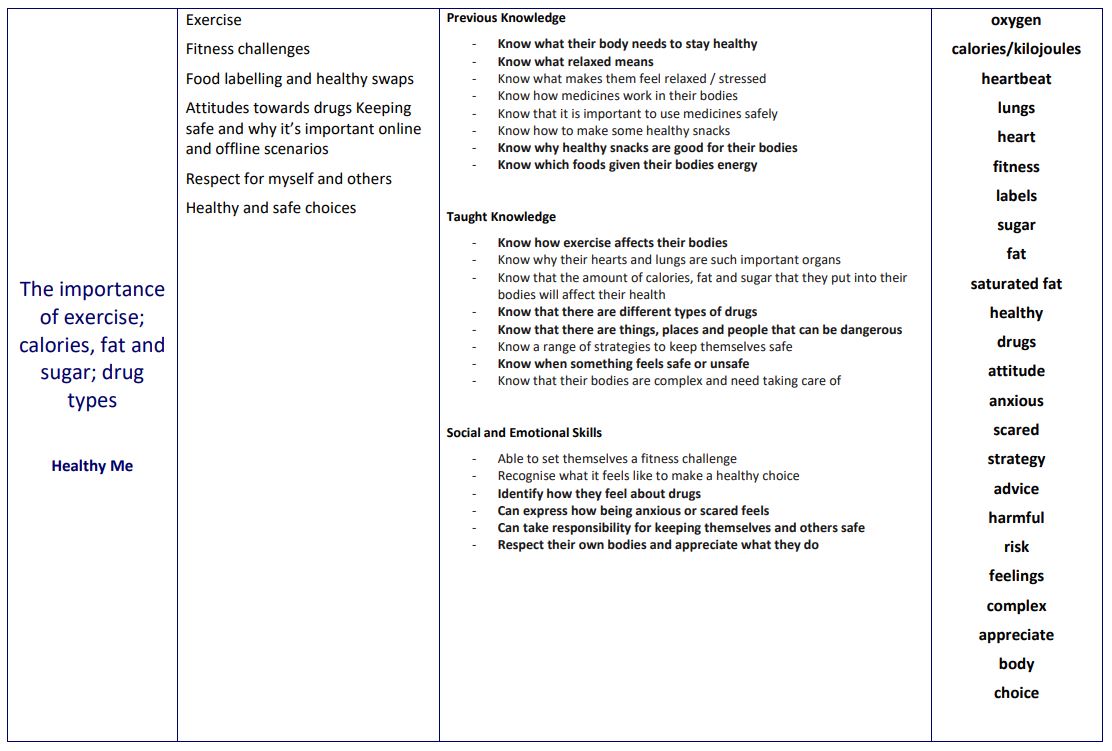
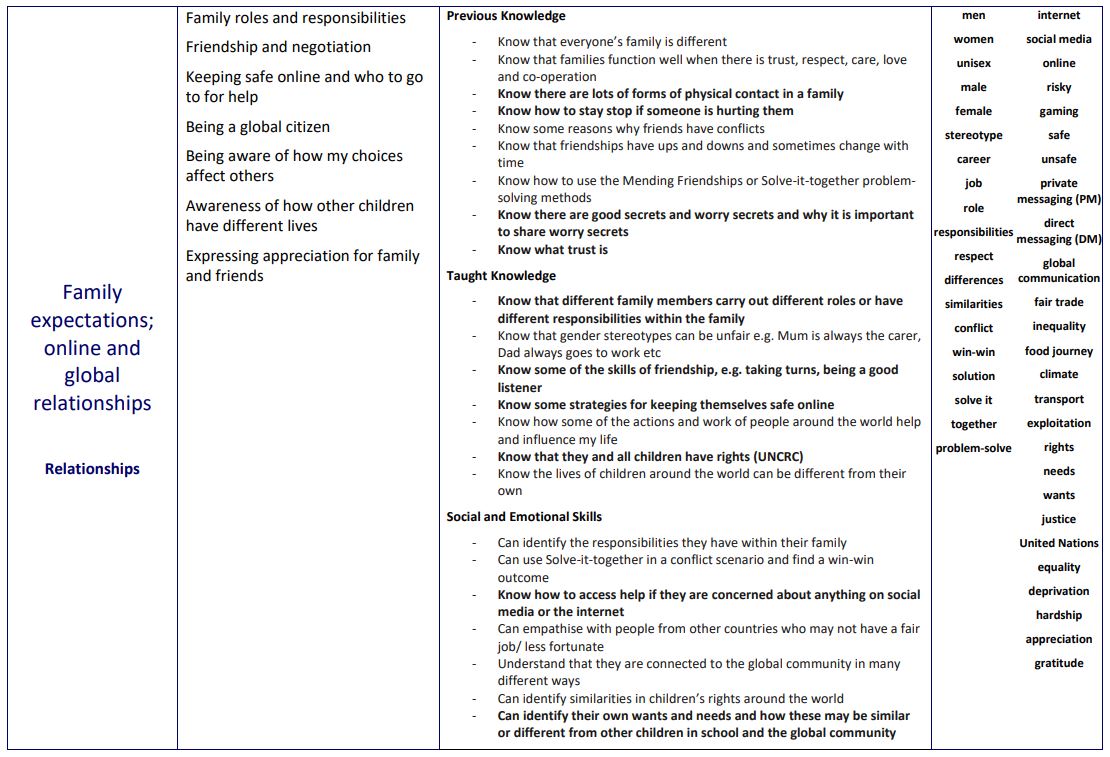
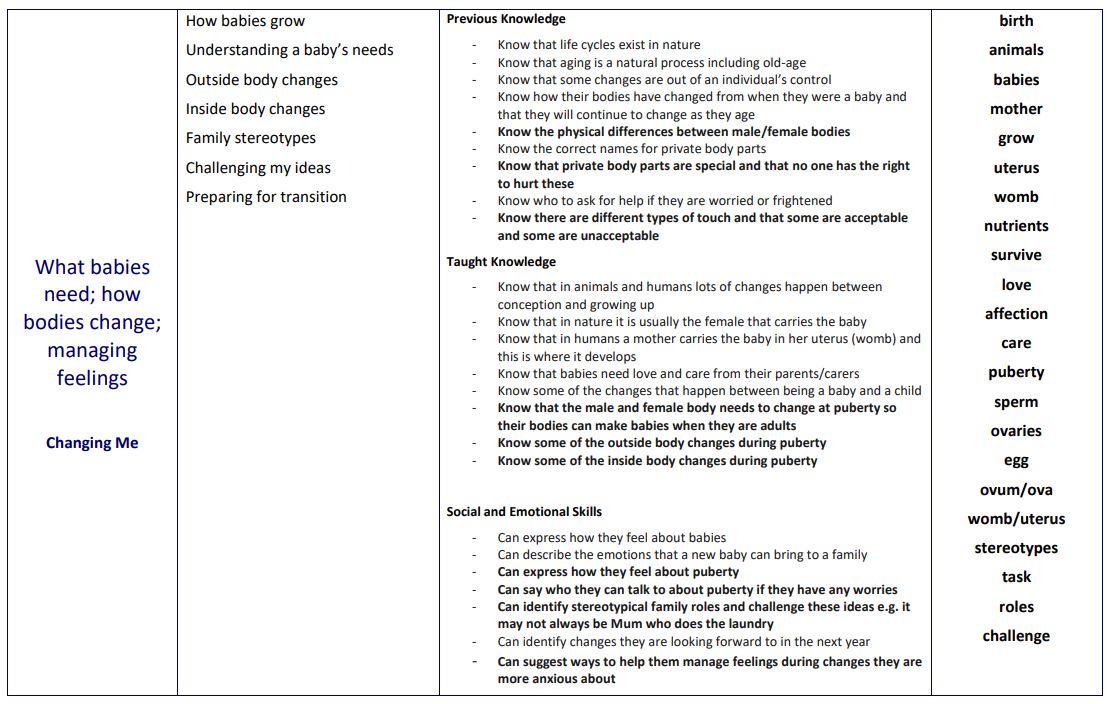
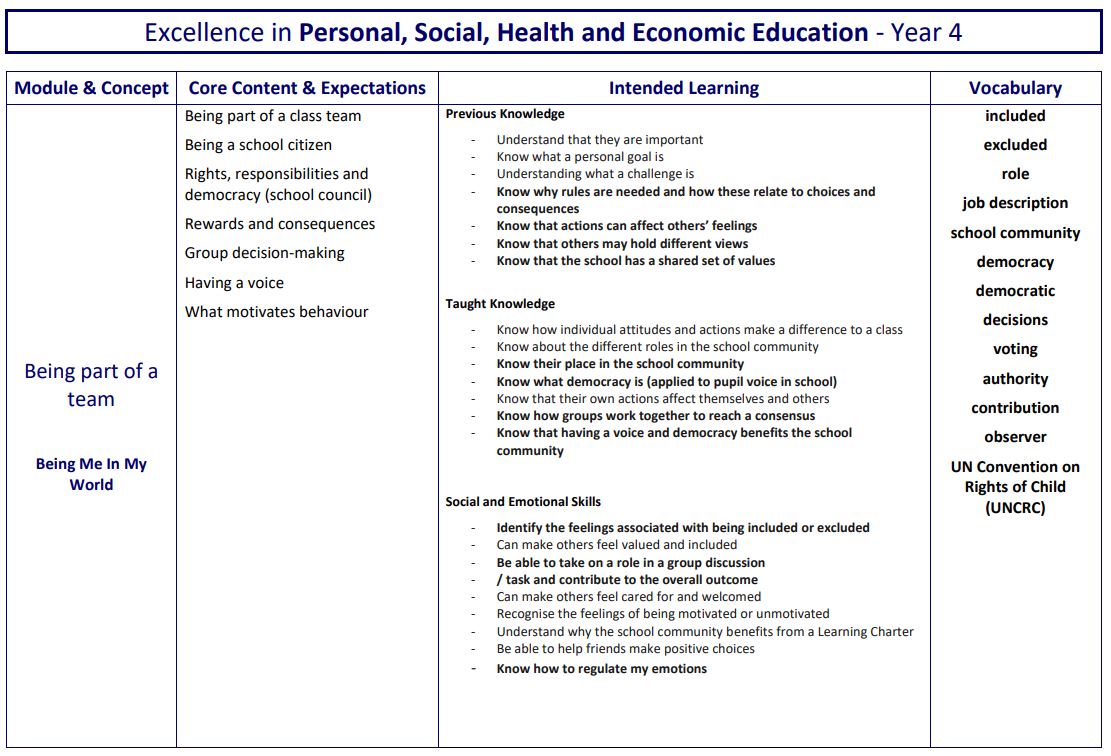
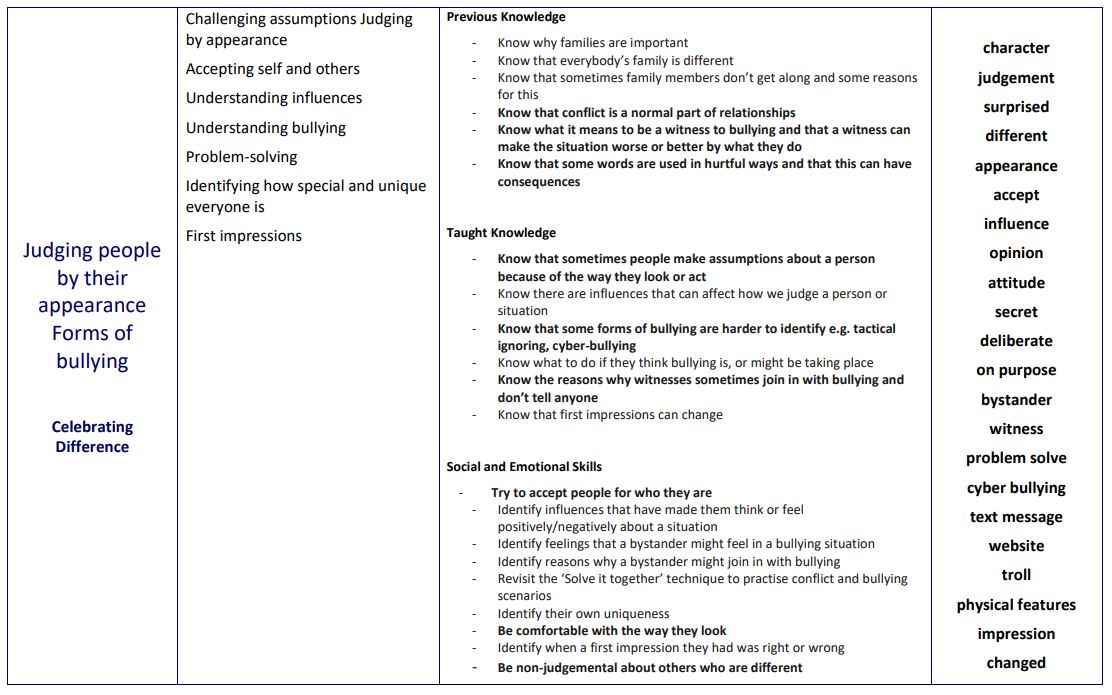
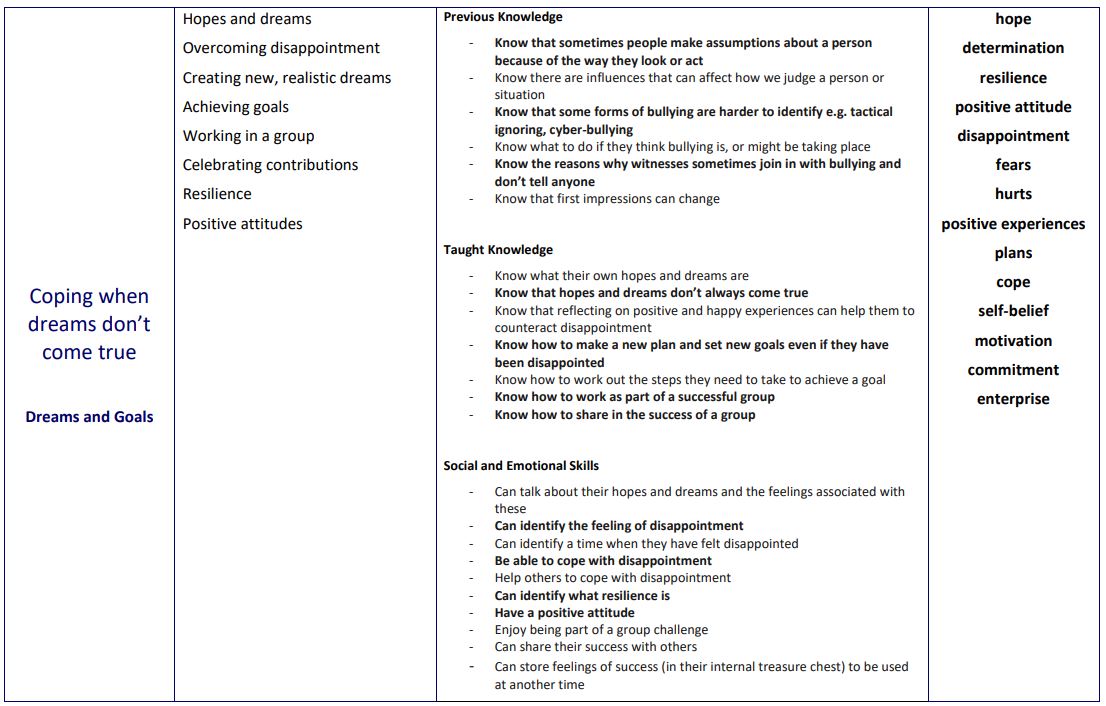
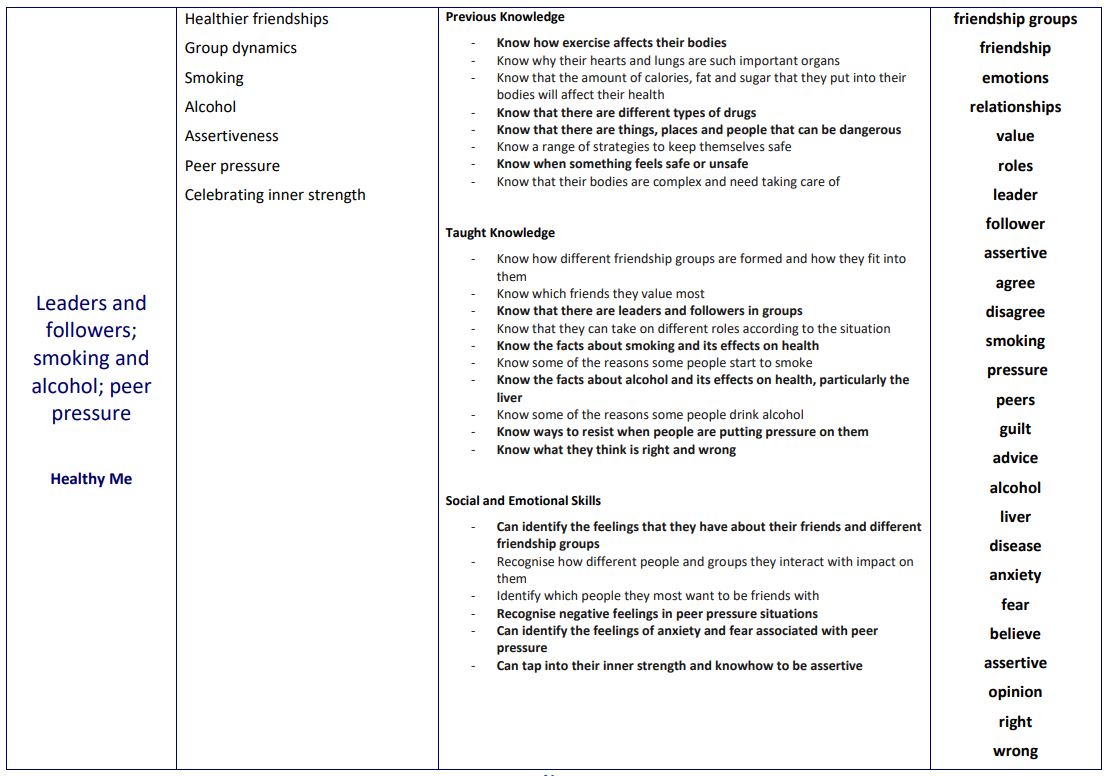
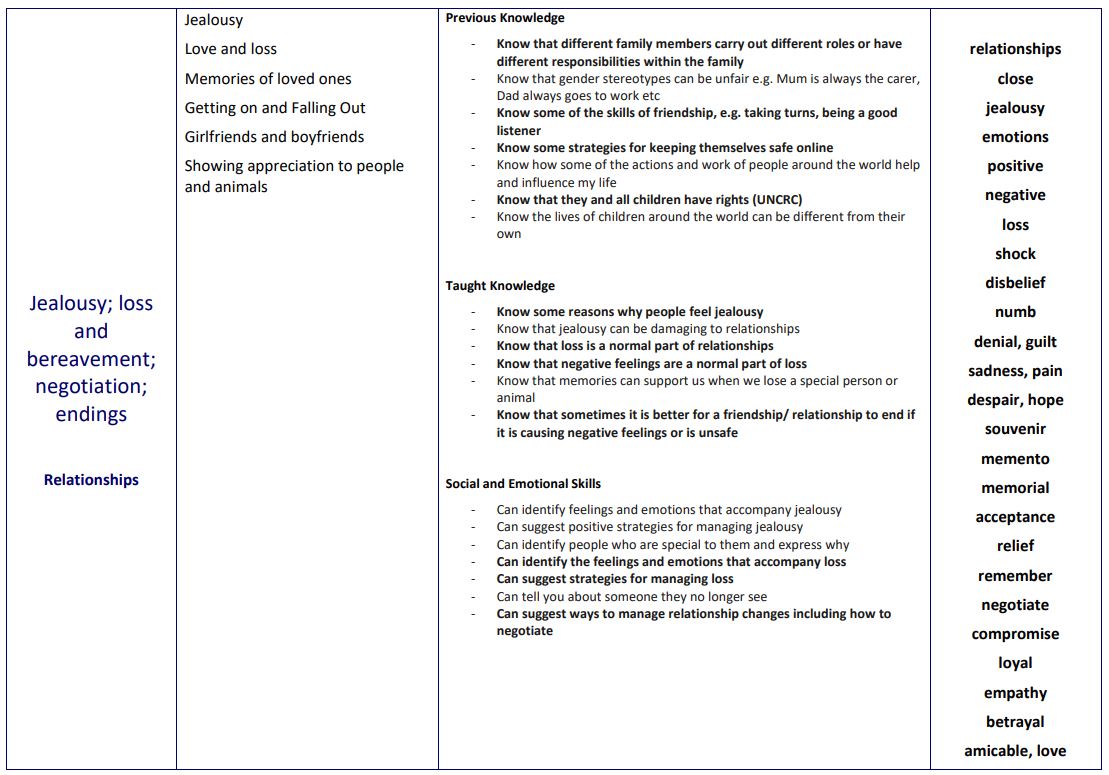
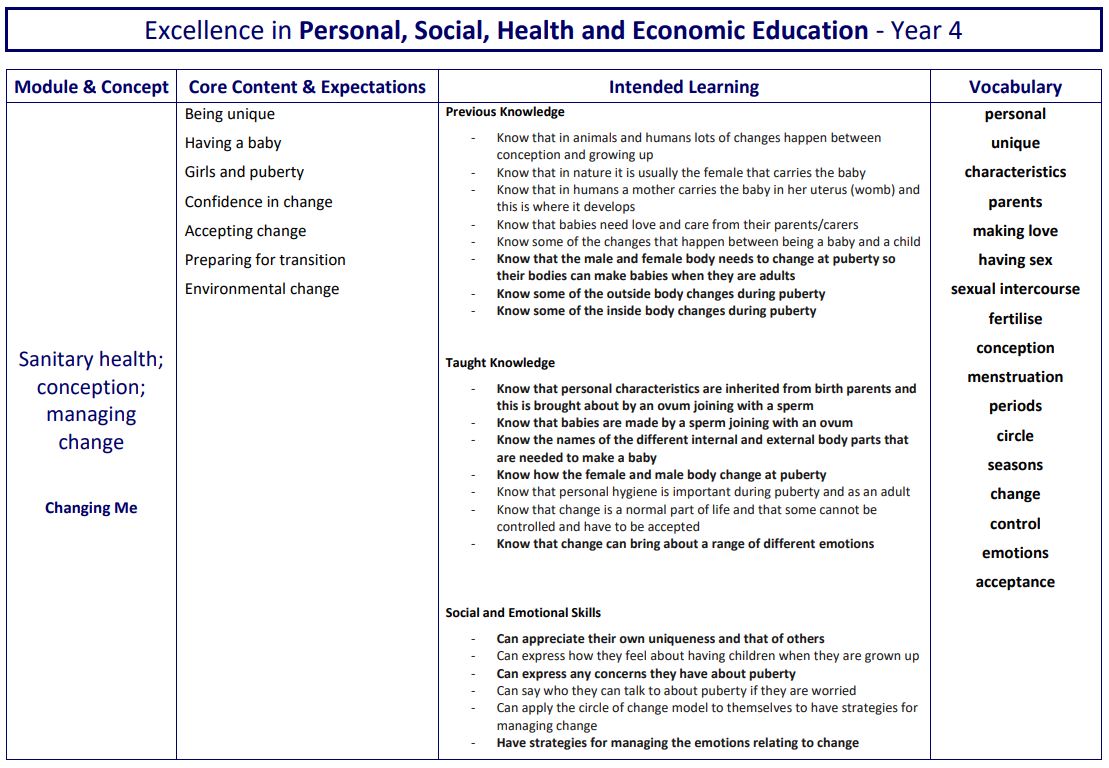
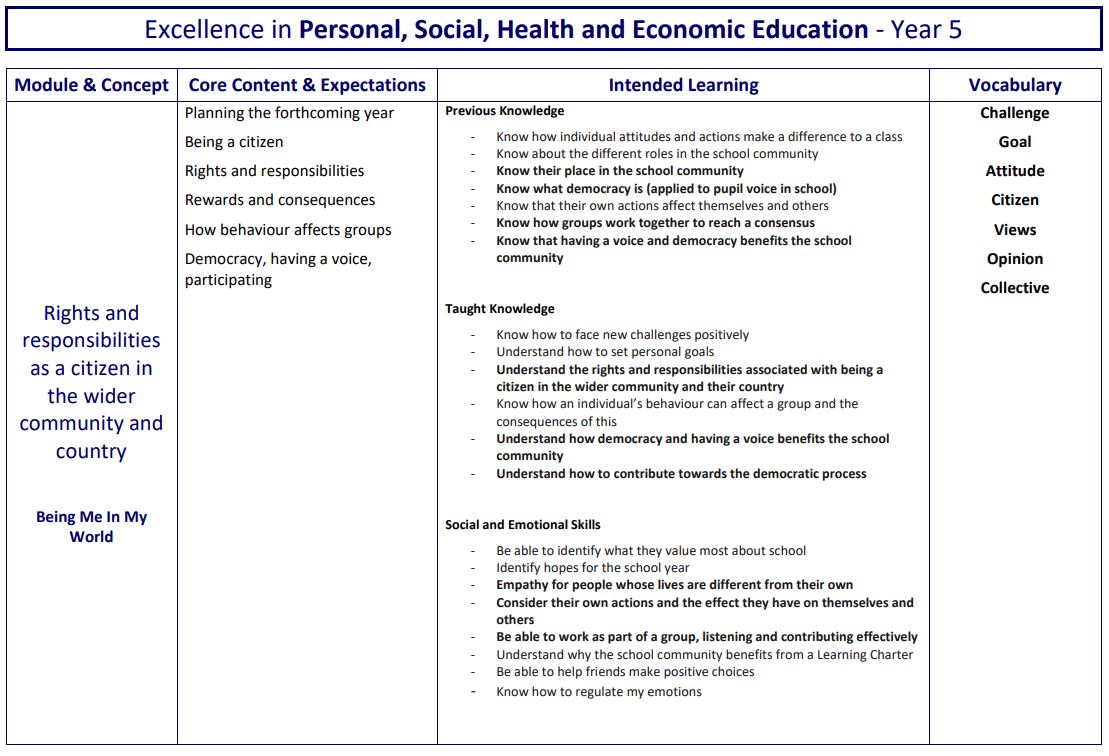
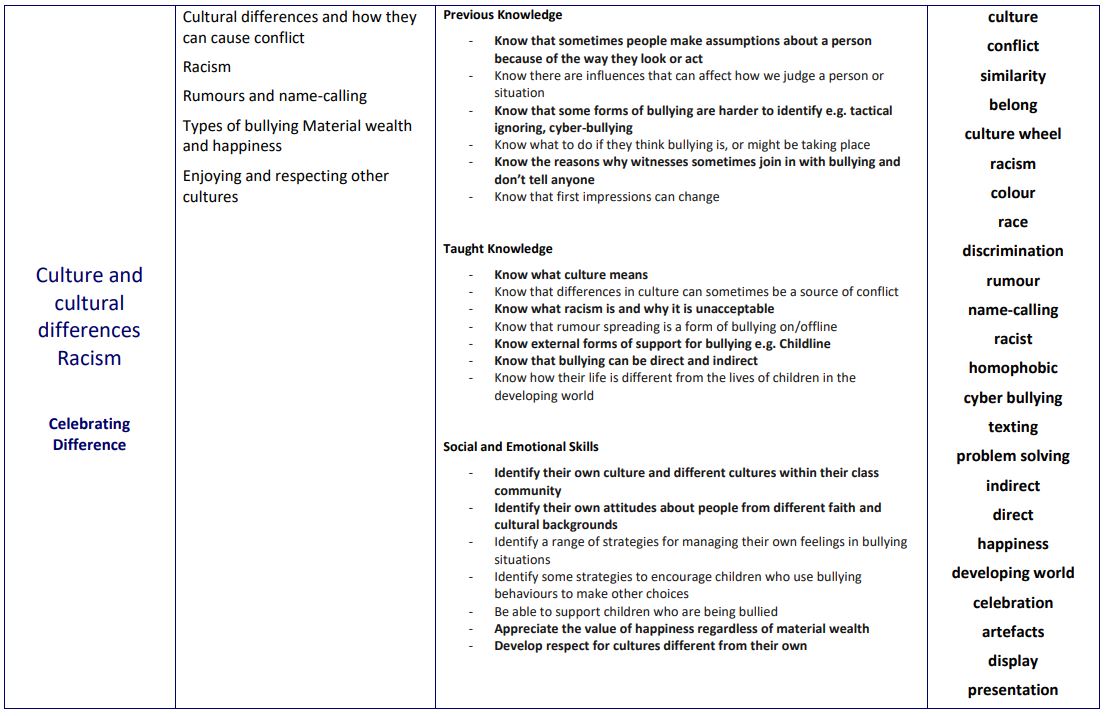
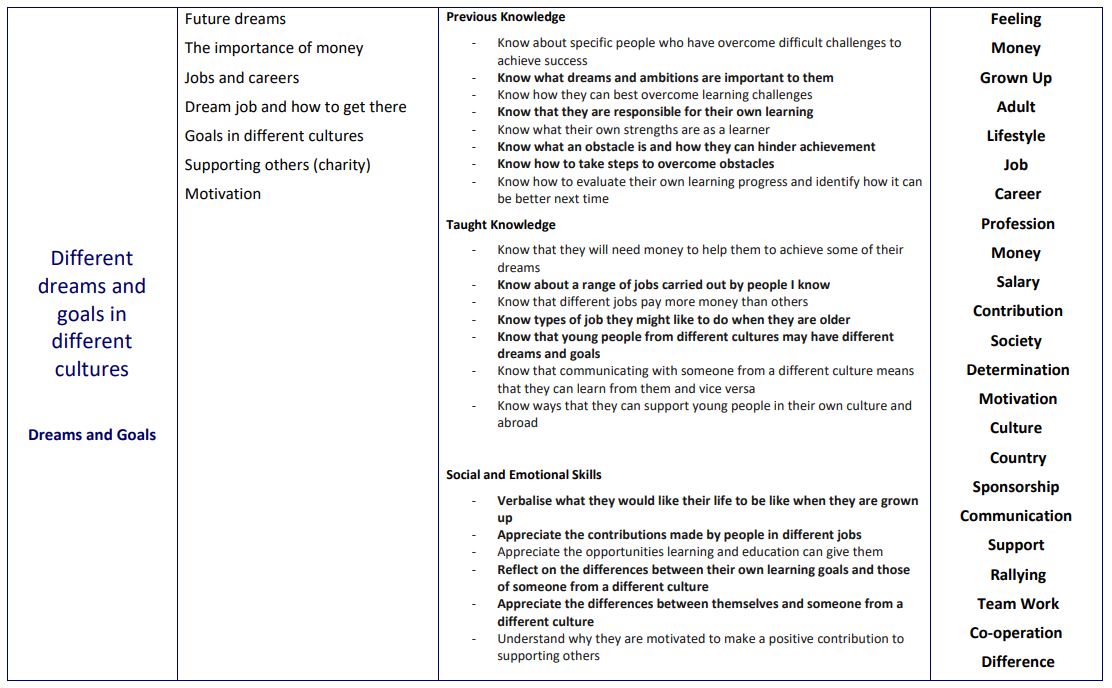
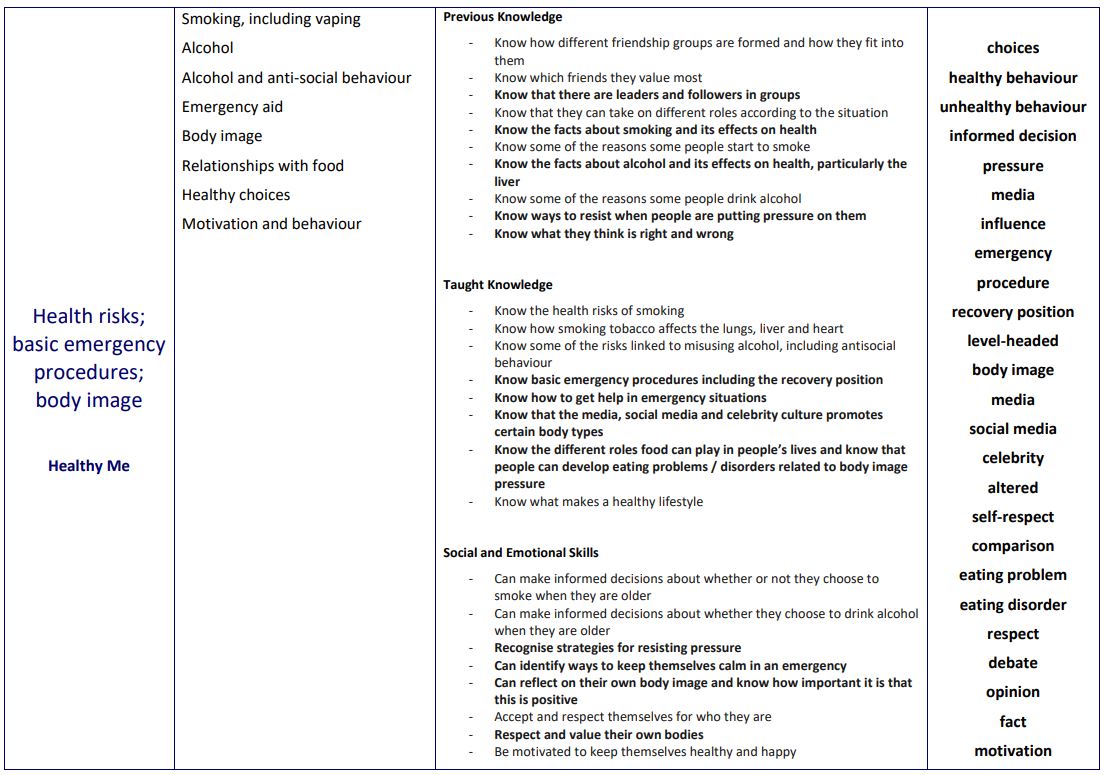
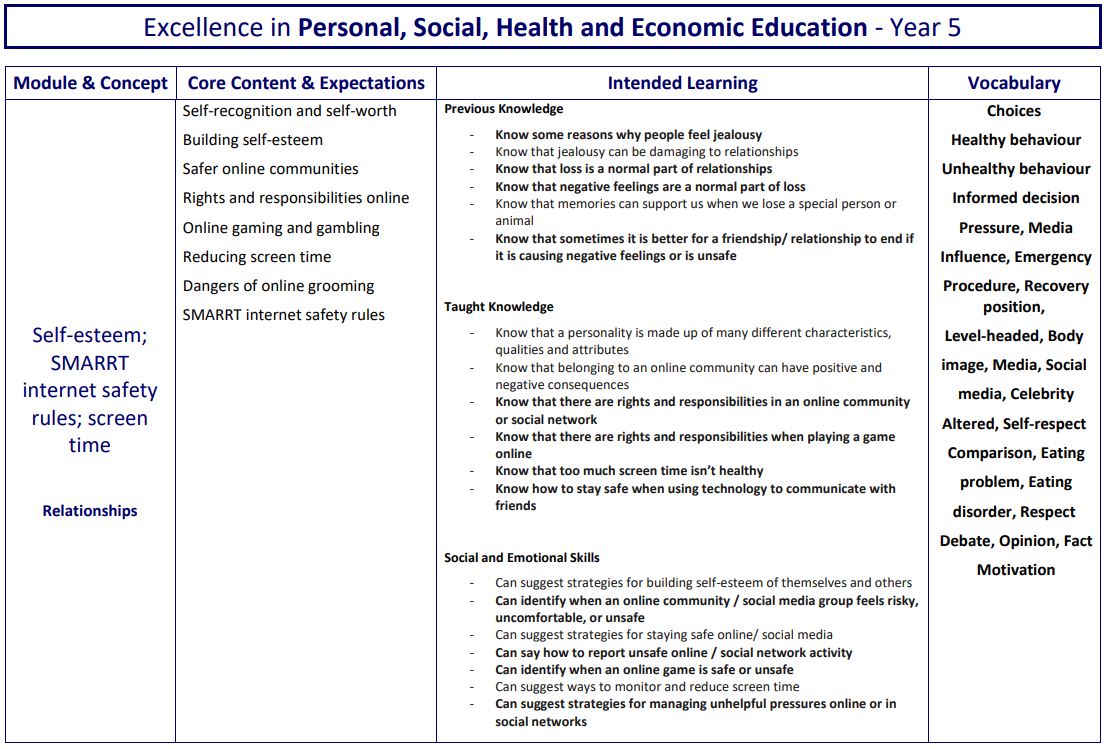

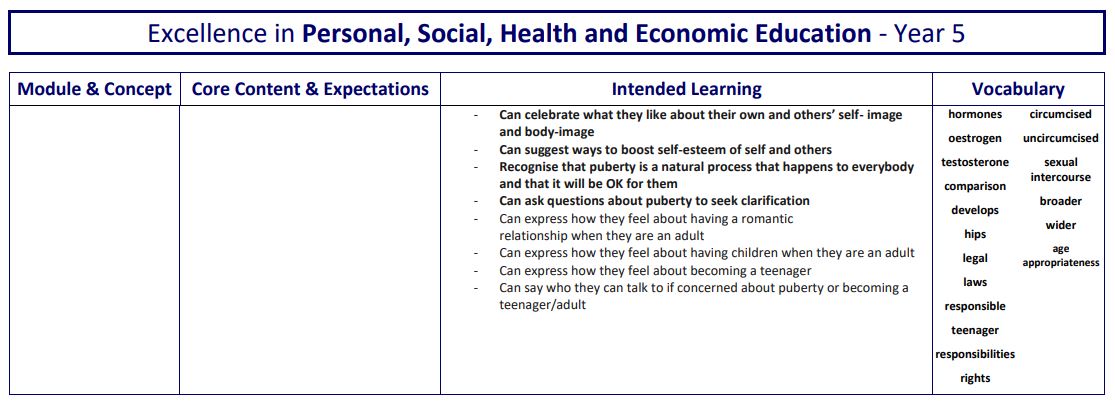
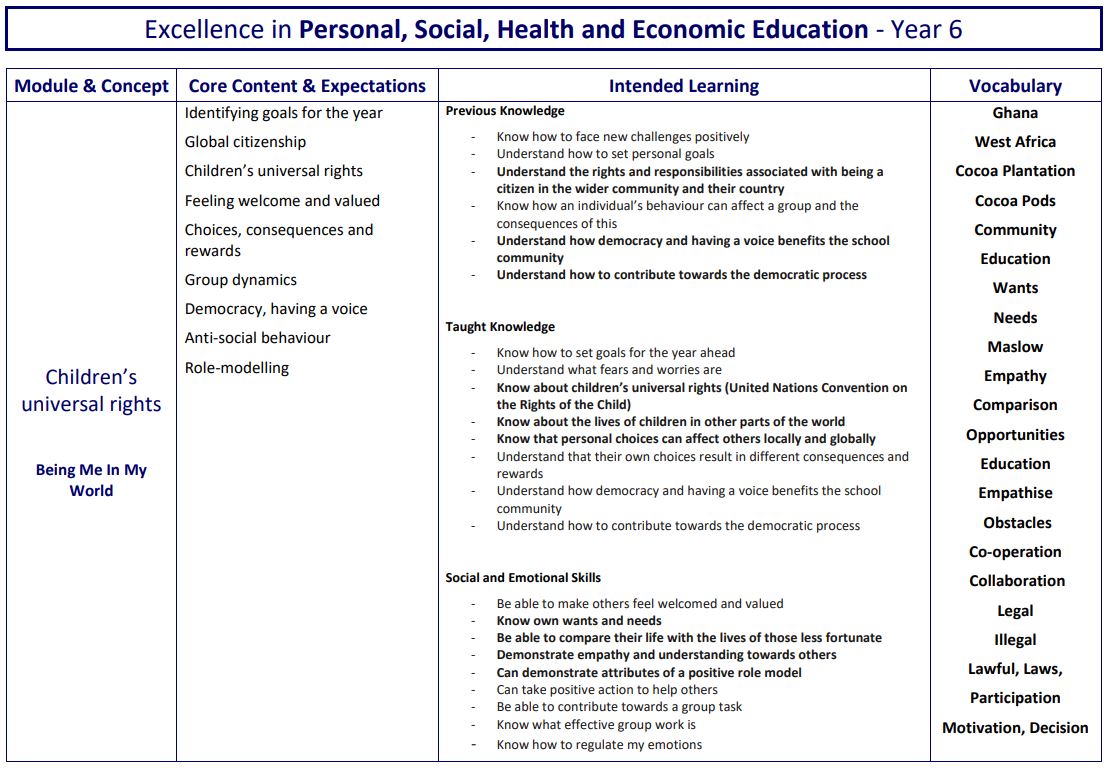
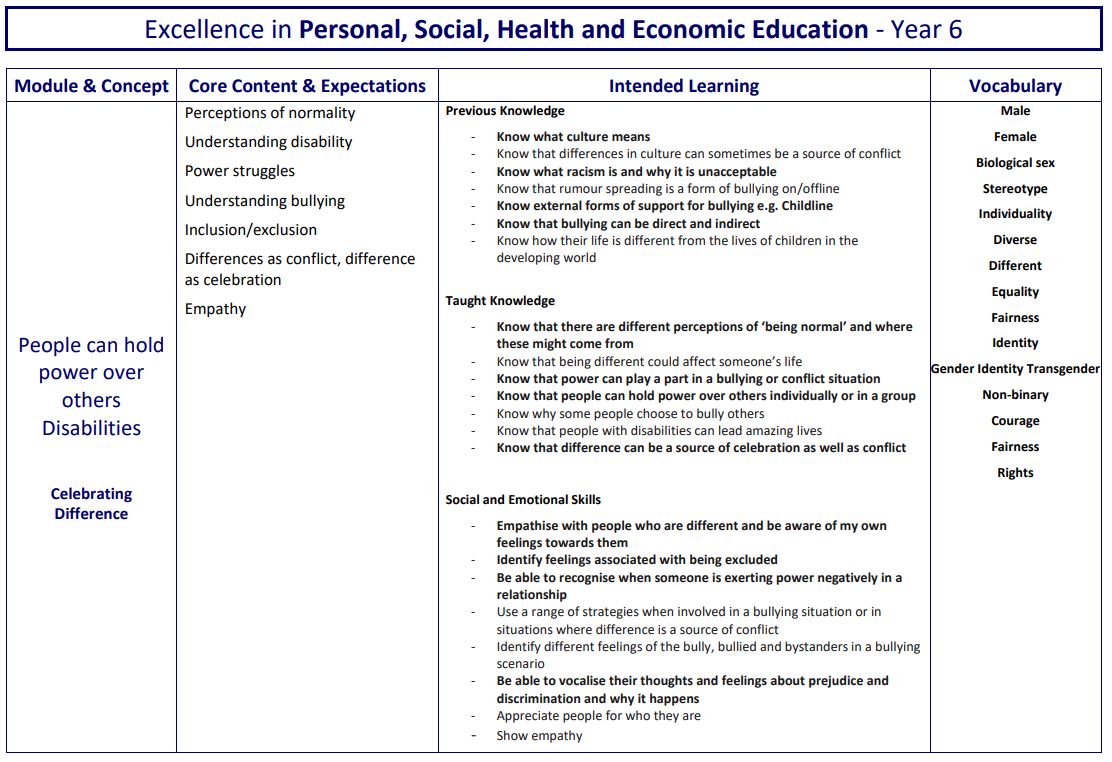
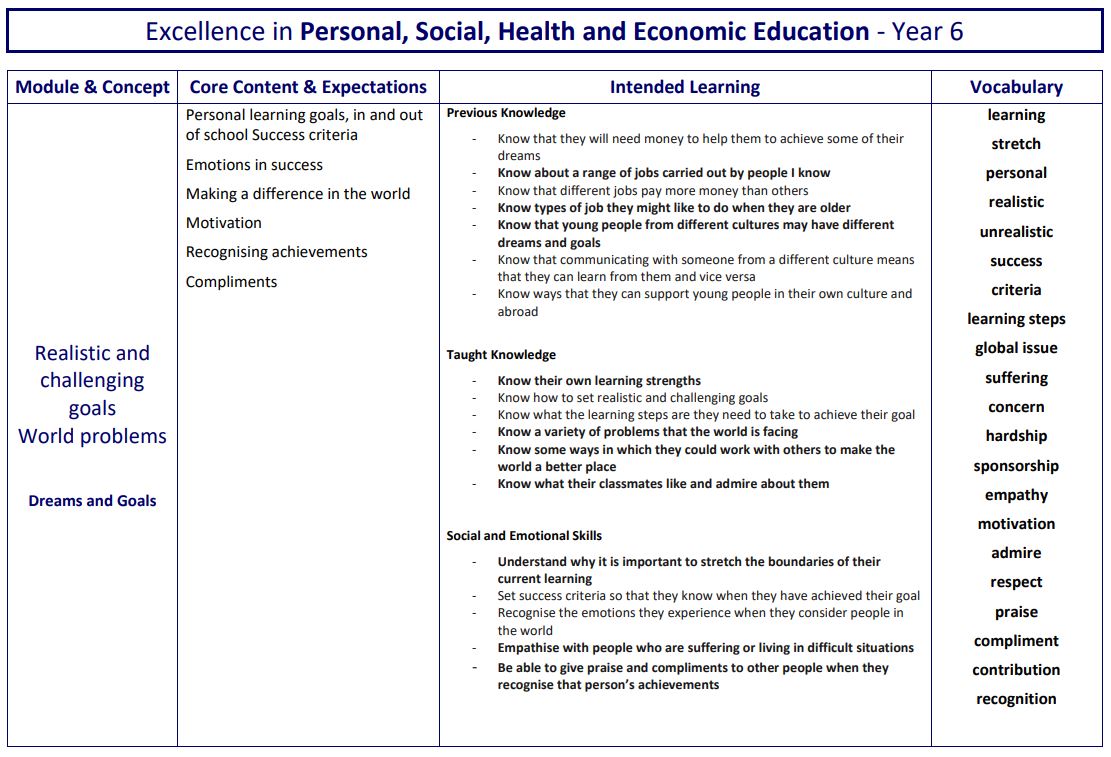
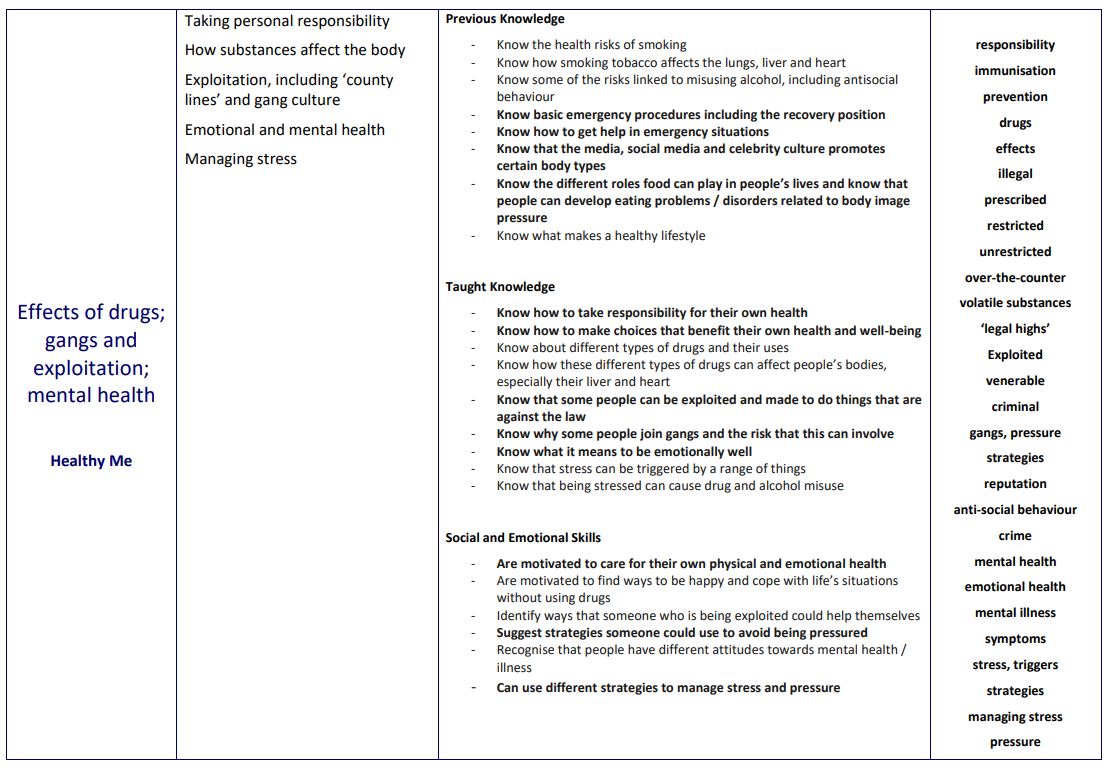
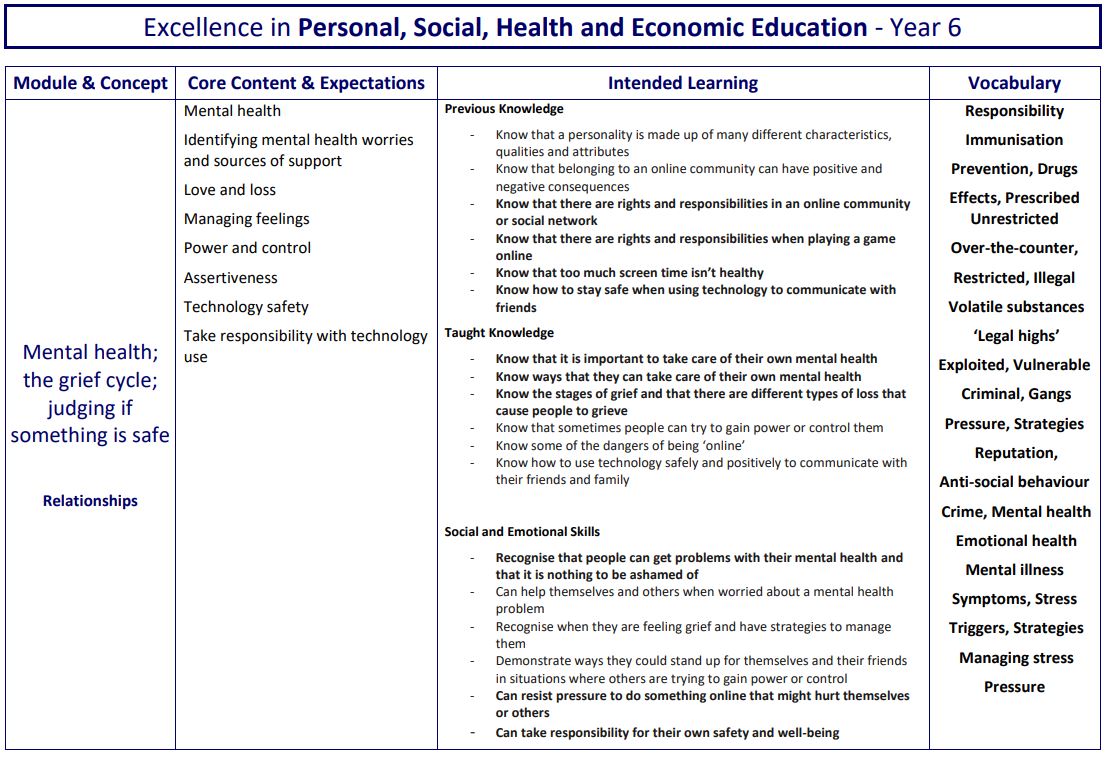
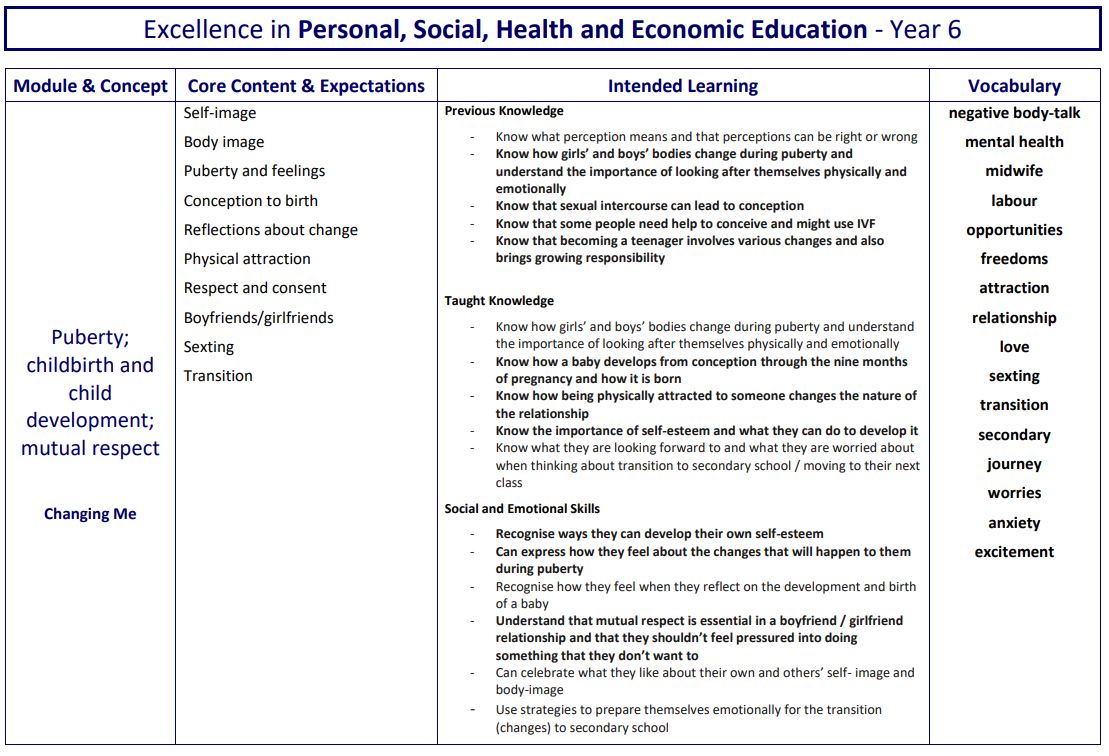
Relationships and Sex Education
We include the statutory Relationships and Health Education within our whole-school PSHE Programme which is taught following the Jigsaw scheme of learning.
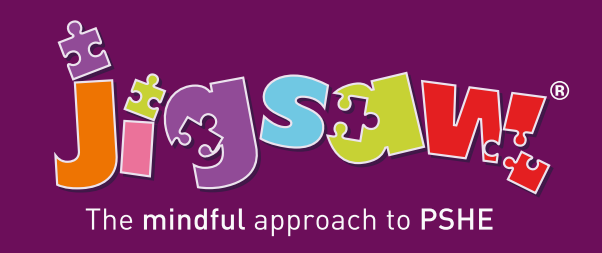
Useful Documents:
Jigsaw information for parents and carers.
RSE information for parents and carers.